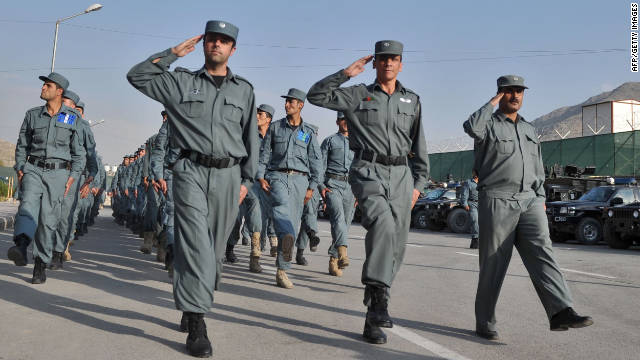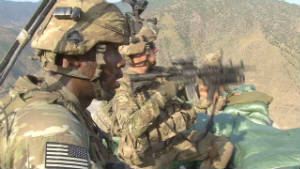Feed: CNN.com - WORLD
Posted on: Monday, November 28, 2011 12:33 PM
Author: CNN.com - WORLD
Subject: Afghanistan announces second phase of security handover
Afghanistan's president announced Sunday a second group of areas where security operations would be handed over from NATO to Afghan troops, setting a potentially rapid timetable to put half of the country's population under Afghan control -- including some areas that until recently were undisputed insurgent hotbeds. |
Afghanistan announces second phase of security handover

- The announcement is a key moment in the U.S. drawdown and NATO withdrawal
- With Sunday's decision, over half of Afghanistan's population will be covered by the transition
- NATO's secretary general calls it a "significant step"
- Some worry that the sharp pace of NATO's handover might allow a Taliban resurgence
Kabul (CNN) -- Afghanistan's president announced Sunday a second group of areas where security operations would be handed over from NATO to Afghan troops, setting a potentially rapid timetable to put half of the country's population under Afghan control -- including some areas that until recently were undisputed insurgent hotbeds.
President Hamid Karzai's announcement of the so-called "second tranche" is a key moment in the drawdown of U.S. troops and gradual NATO withdrawal of forces in 2014. It comes as some worry that the sharp pace of NATO's handover might in some areas allow a resurgence of the Taliban, who some observers believe are waiting for coalition forces to step back so they can retake ground.
The areas of Nad-e-Ali in Helmand -- the site of many British deaths in the past years -- and the city of Ghazni, surrounded by volatile rural areas, are among the areas to be handed over.
With Sunday's decision, "over half of the country's population would now be covered by the Transition Process," the presidential palace said in a statement.
"This is another significant step towards our shared goal of an Afghanistan governed and secured by Afghans for Afghans," NATO Secretary General Anders Fogh Rasmussen said in a statement.
 New Taliban video may show attack preps
New Taliban video may show attack preps  Afghan Twitter war
Afghan Twitter war  Afghanistan prepares for U.S. exit
Afghanistan prepares for U.S. exit Karzai listed the districts of Balkh, Takhar, Daikundi, Samangan, Kabul and Nimroz as ready for handover.
The cities of Jalalabad, Cheghcheran, Sheberghan, Faizabad, Ghazni city, Qalai-e-Naw and Maidan Shahr would also be given to Afghan security forces to control.
They also listed a series of areas around the country that included once violent parts of Helmand, for years a focus of the Afghan conflict. Nawa, Naad Ali and Marja will be handed over.
Marja, a former Taliban stronghold where the U.S. Marines launched an offensive to retake in 2009, is now relatively peaceful, partially because of huge NATO investment in the area.
Aimal Faizi, a spokesman for Karzai, said the three areas in Helmand were added after a series of talks with officials from that province.
"We think that was also a test for security forces to see if they can handle all issues there," he told CNN. "Let's see how they do in the coming months."
The areas now can gradually begin to transition to Afghan control, but there will be no concrete date announced for the handover to officially happen, the spokesman said.
The presidential palace's statement added that the first phase of transition, including several other provinces and cities, had passed successfully.
The precise list of places to be handed over has been debated for months, but its exact contents were known only to Karzai himself. Western officials had expressed concern the second group might contain even more volatile areas.
Helmand's capital, Lashkar Gah, was handed over to Afghan forces in July, and has seen no major uptick in violence since then.
A spokesman for Helmand's governor dismissed concerns that rural areas proposed in the second wave are more remote and vulnerable to Taliban resurgence.
"The enemy will definitely try to do their best to bring insecurity in these places as they tried their best in Lashkar Gah city, by sending suicide attacks. But in the end they failed, and they will in other areas too," spokesman Daoud Ahmedi said.
Most Popular
Loading weather data ...












No comments:
Post a Comment